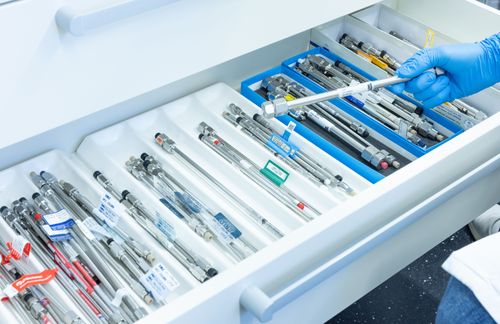
Tritium labelling of peptides
A variety of reactions are available for labelling peptides. Classically, modified amino acids such as 4-iodo-phenylalanine, 3,5-diiodo-tyrosine, 3,4-didehydro-proline or 4,5-didehydro-leucine are incorporated into the peptide and then converted to the desired labelled peptide by catalytic dehalogenation or multiple bond reduction. While a specific activity of 15-28 Ci/mmol per cleaved halide is expected for catalytic dehalogenation, specific activities of up to 100 Ci/mmol can be achieved by multiple bond reduction.
Thyrotropin Releasing Hormone (TRH)
Vasopressin
If no precursor can be produced, it is also possible to perform a direct H/T exchange on peptides. However, the specific activity is very difficult to predict.
Tritiated coupling reagents offer a further possibility to label peptides. For example, peptides can be N-terminally labelled with tritium-labelled N-propionylsuccinimide (NPS) with high specific activities. Another example is the methylation of lysines by reductive amination using formaldehyde and sodium borotritide. The disadvantage of these methods is that the product is slightly structurally altered.